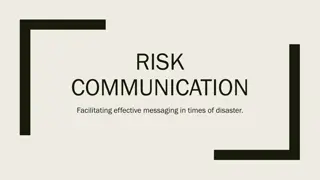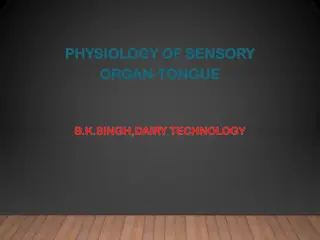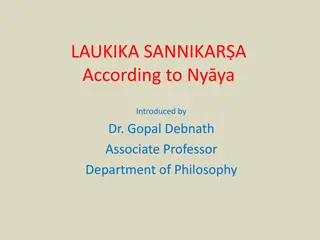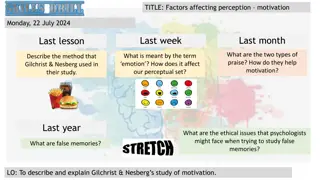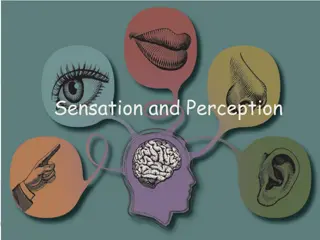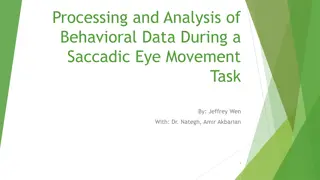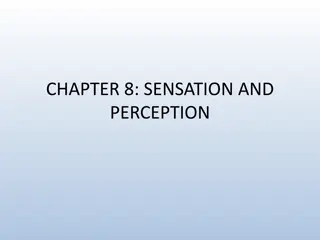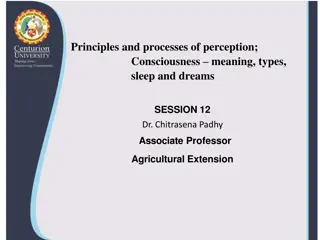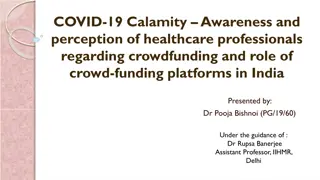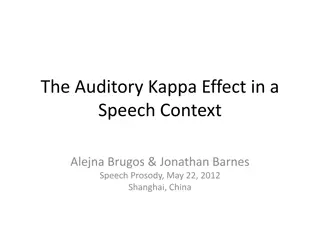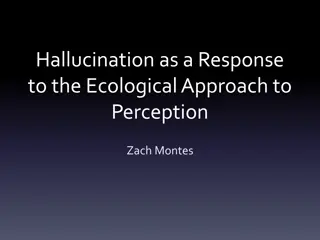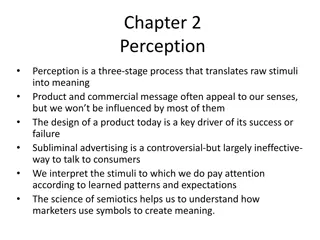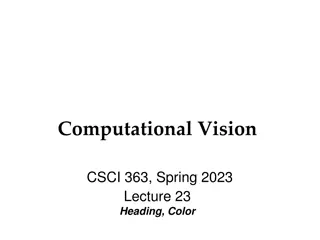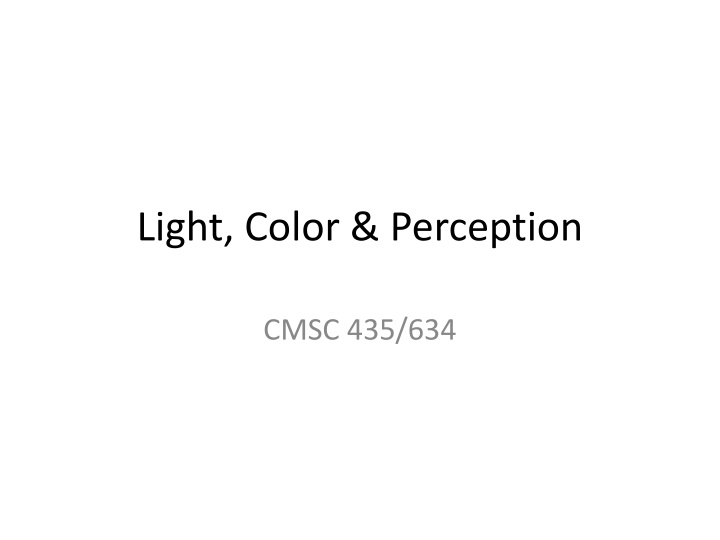
Light, Color, and Perception in CMSC 435/634 Course
Explore the fascinating world of light, color, and perception in this comprehensive study focusing on topics such as electromagnetic waves, radiometric units, color perception, linear bases, photometric units, and nonlinear color picking and perception. Discover the intricate relationship between light, color, and human perception with detailed insights and visuals. Enhance your understanding of concepts like spectral energy, additive and subtractive color models, photometric units, and more.
Download Presentation

Please find below an Image/Link to download the presentation.
The content on the website is provided AS IS for your information and personal use only. It may not be sold, licensed, or shared on other websites without obtaining consent from the author. If you encounter any issues during the download, it is possible that the publisher has removed the file from their server.
You are allowed to download the files provided on this website for personal or commercial use, subject to the condition that they are used lawfully. All files are the property of their respective owners.
The content on the website is provided AS IS for your information and personal use only. It may not be sold, licensed, or shared on other websites without obtaining consent from the author.
E N D
Presentation Transcript
Light, Color & Perception CMSC 435/634
Light Electromagnetic wave E & M perpendicular to each other & direction Photon wavelength , frequency f = c/ Visbile 380 nm (blue) to 720 nm (red) Photon energy q = h f = h c/ (in J) h = Planck s constant Spectral energy Q = J/nm
Radiometric Units Term Spectral Energy Spectral Power Irradiance Radiance Radiant Intensity Symbol Q = dQ/dt E = d /dA L = d2 /(d dA) W/(sr m2) I = d /d Units J W = J/s W/m2 W/sr /nm dropped by graphics convention
Light Infinite-dimensional function vector space spectrum( ) Shine two lights on something adds energies Scale light energy, scales the intensity
Color Perception Cones = function dot product Projects to a 3D subspace metamer = different spectrum, looks the same Can transform to any 3D linear basis
Linear Bases Additive (light) Tristimulus (SLM cone response) CIE XYZ (from color matching experiments) RGB (different for each device) Yuv, YCrCb, Subtractive (pigment) CMY = 1-RGB (grade school Blue, Red, Yellow) CMYK
Photometric Units Visual intensity Term Luminous Energy Lumens Illuminance (Lux) Luminance Candelas Symbol Q = dQ/dt E = d /dA L = d2 /(d dA) lm/(sr m2) I = d /d Units talbot lm = talbot/s lx = lm/m2 cd = lm/sr
Nonlinear Color Picking HSV: Cylindrical Coordinates Hue = angle Saturation = distance from central axis Value = distance along axis
Nonlinear Perception Linear colors don t look uniformly different Nonlinear Luminance Gamma (sRGB), L*uv Nonlinear Luminance & Color L*u*v*, L*a*b* Can measure color distances Nonlinear colors do not add
Adaptation White point Measure as equivalent to black body K Red-Orange-Yellow-Blue-White Incandescent, Dynamic range (HDR) Dark room vs. Sunny day
Tone Mapping Convert HDR to LDR Global intensity Local intensity Time Film exposure Aperture, shutter speed, ISO

